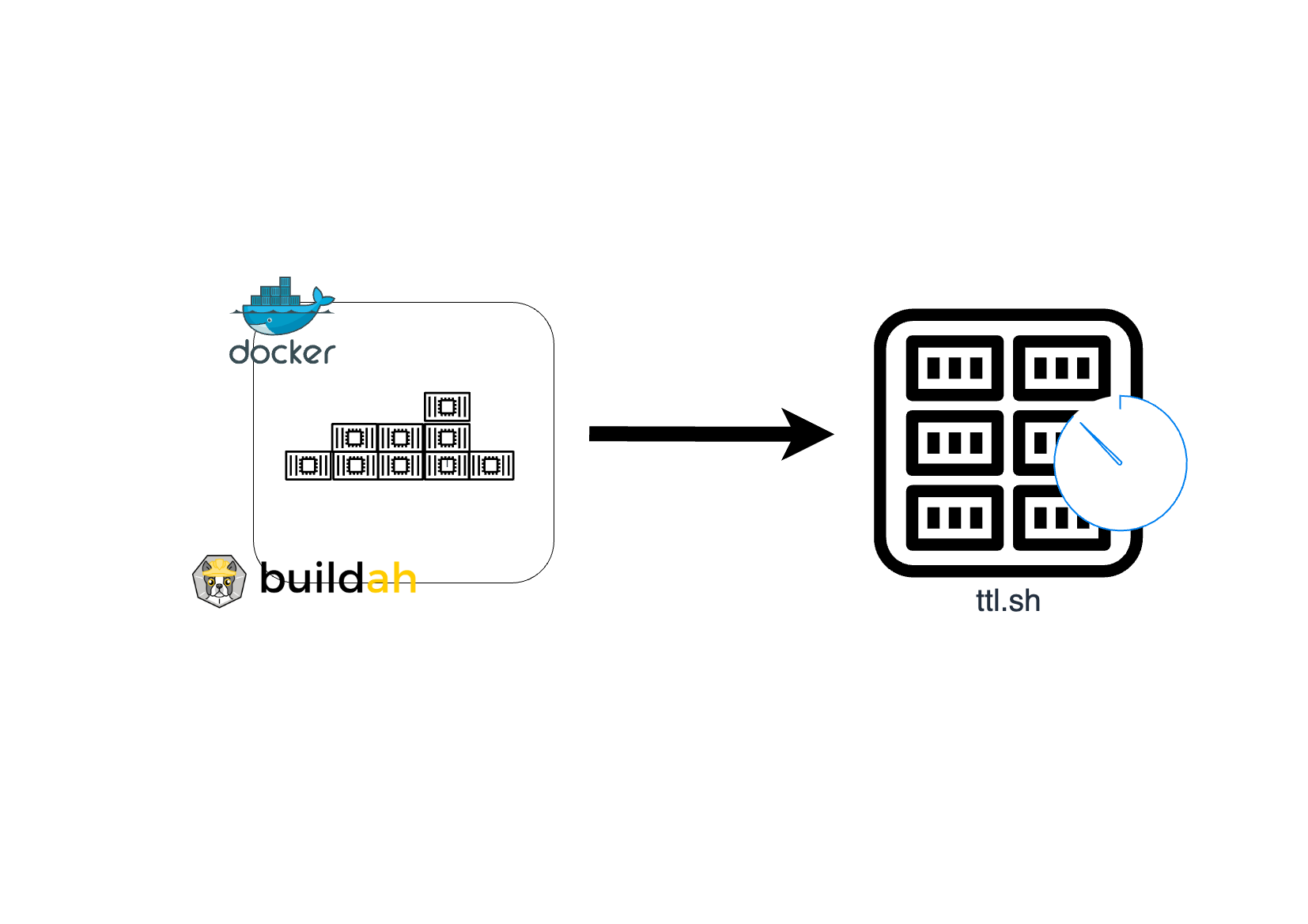Short-lived Container Images
Containerization has revolutionized software development and deployment, offering portability, scalability, and efficiency. The concept of short-lived container images has emerged, promoting the use of images with a limited lifespan. One notable goto tool in this space is ttl.sh, a platform that facilitates the management of time-to-live (TTL) for container images serving as an anonymous ephemeral container image registry.
In scenarios where quick demos are needed or there is the need to reduce the complexity of authenticating to a registry or worrying about security complexities, this will come handy.
Using ttl.sh
Tag the image with ttl.sh, a UUID, & time limit (i.e. :2h)
Push the image
Pull the image (before it expires)
Image tags provide the time limit. The default and max is 24 hours (valid time tags :5m, :1600s, :4h, :1d)
Example
Using this is as simple as it can get. Take for an example a Dockerfile as below;
1
2
3
4
# Dockerfile
FROM busybox
RUN echo "Hello world" > /tmp/hello_world.txt
CMD ["cat", "/tmp/hello_world.txt"]
To build, push and run using ttl.sh you would use the following commands:
1
2
3
IMAGE_NAME=busybox-simple
docker build --tag ttl.sh/${IMAGE_NAME}:1m .
docker push ttl.sh/${IMAGE_NAME}:1m
Scenario Usage
This usage of short-lived images is useful in scenarios where you want to quickly spin up a container for testing or debugging purposes inside a CICD pipeline without having to authenticate and push to a private repository. Example github action workflow
1
2
3
4
5
6
7
8
9
10
11
12
13
14
15
16
17
18
19
20
21
22
23
24
25
26
27
28
29
30
31
32
33
34
35
36
37
38
39
40
41
42
43
44
45
# ci-kind.yaml - source https://github.com/adekoyadapo/k8s-kind-github-action
on:
push:
branches:
- main
jobs:
Deploy-to-cluster:
runs-on: ubuntu-latest
steps:
- name: Checkout Code
uses: actions/checkout@v4
- name: Set Up Docker Buildx
uses: docker/setup-buildx-action@v3
- name: Build Docker Image
run: |
docker build -t ttl.sh/hello-world:5m .
docker push ttl.sh/hello-world:5m
- name: Create k8s Kind Cluster
uses: helm/[email protected]
with:
version: v0.20.0
config: cluster.yml
cluster_name: static
- name: Apply Kubernetes Manifest
run: |
kubectl apply -f pod.yml
kubectl wait --for=condition=Ready pods --all
- name: Check Pod NodePort
id: check-nodeport
run: |
nodeport=$(kubectl get svc hello-world-service -o jsonpath='{.spec.ports[0].nodePort}')
echo "The Hello World pod is accessible at NodePort: $nodeport"
echo "nodeport=$nodeport >> $GITHUB_OUTPUT"
- name: Check App with curl
run: |
nodeport="$"
curl http://localhost:${nodeport}
This simple workflow from the repo is an example where the container image in a simple kind cluster as part of a CI workflow.
For someone like me that leverage on quick demos, this has been an added advantage in a while now. You can visit this repo to see how it works in a pipeline


